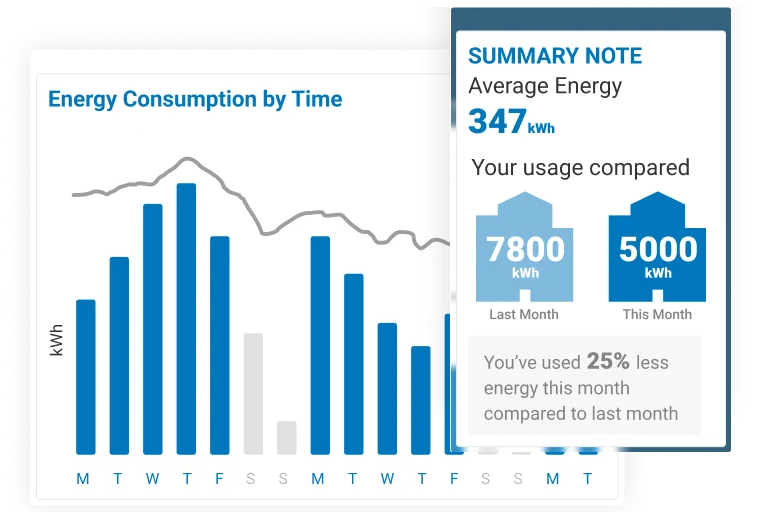
HVAC is the top source of energy use in commercial buildings, topping an average of 40% (Heating 32%, Cooling 9%) in the most recent Commercial Buildings Energy Consumption Survey (CBECS) from the U.S. Energy Information Administration[1]. Implementing effective heating, ventilation, and air conditioning (HVAC) energy management strategies are crucial for minimizing operational costs. Thermostat setbacks, the practice of adjusting heating and cooling setpoints during unoccupied periods, has been found to be a well-established method of reducing energy usage. By allowing the indoor temperature to drift within a wider, yet acceptable, range, the HVAC system operates less frequently and for shorter durations, directly reducing energy demand. This principle is akin to minimizing lighting usage in vacant rooms.


Early setback research, often conducted through field studies and simulations, established the fundamental relationship between the magnitude and duration of temperature setbacks and the energy savings. This initial work, while sometimes focused on residential applications, provided a crucial foundation for understanding the potential benefits in commercial settings.
This article provides a comprehensive overview of the research underpinning the value of thermostat setbacks across a diverse range of commercial building types including restaurants, educational facilities, office buildings, grocery stores, retail spaces, healthcare facilities, and places of worship.
Because commercial buildings have vastly different use cases, occupancy rates, and occupancy schedules it’s impossible to have a single rule that fits all buildings. The setback configuration of any building requires knowledge of the use case and occupancy schedules. However, it is possible to make some generalizations by building type.
Commercial Office Buildings: Because of their predictable occupancy schedules office buildings have been heavily researched. Studies using building models and real buildings have shown significant energy savings using office hour, nighttime, and weekend temperature setbacks. A comprehensive study by the U.S. Department of Energy highlighted that a 7°F to 10°F setback for eight hours daily could yield up to 10% in heating and cooling energy savings[2]. Another study from the Canadian Centre for Housing Technology (CCHT) found greater than 20% energy savings using 15 degree setbacks[3]. The integration of occupancy sensors to dynamically adjust setpoints based on real-time occupancy has also been shown to enhance savings beyond fixed schedules[4]. Adding basic occupancy sensors to individually controlled meeting rooms resulted in a 22% reduction of energy use[5].

Educational Facilities: With distinct daily and seasonal occupancy patterns these facilities offer unique opportunities for thermostat setbacks. For example, some research has investigated the effectiveness of setbacks during evenings, weekends, and extended school holidays. Studies indicate that significant energy reductions can be achieved without compromising comfort during occupied hours, particularly when optimizing for pre-occupancy temperature conditioning and time-of-use charges it resulted in up to 50% energy cost savings[6].

Restaurants, Retail, and Grocery: These buildings often have extended operating hours but also may have periods of lower occupancy or zone closures. Recommended overnight setback methods similar to those from office spaces are most frequently for restaurants and retail. The longer the unoccupied times the larger the energy savings. While grocery stores often maintain long hours, implementing HVAC setbacks in their administrative and storage areas, which experience periods of unoccupancy, has demonstrated energy savings[7].

Healthcare Facilities: Healthcare buildings present the most stringent requirements for temperature control due to patient comfort and safety. Research in this sector has explored the potential for setbacks in non-critical areas such as administrative offices, waiting rooms during off-peak hours, and storage spaces. Other similar spaces such as operating rooms which are typically used no more than 8 to 12 hours per day have been proven to provide energy savings of over 40% savings[8,9,10]. When dealing with medical facilities, emphasis needs to be on rigorous analysis and careful implementation to avoid any negative impacts on patient care environments.

Churches and Houses of Worship: The Environmental Protection Agency highlighted in 2007 that these buildings spent more than $2 billion on energy. With low-cost changes, like temperature setbacks, the congregations were estimated to reduce their energy costs by upwards of 30%[11]. This is because these buildings often have highly intermittent occupancy schedules, with significant periods of vacancy throughout the week.

Research robustly supports the implementation of thermostat setbacks as a viable and effective strategy for reducing HVAC energy consumption in commercial buildings. By analyzing occupancy patterns and leveraging appropriate control technologies significant cost savings can be achieved. In particular, Light commercial, Education, and Houses of Worship buildings present a substantial opportunity for greater savings due to its often longer unoccupied periods.
Unlock the full potential of thermostat setbacks for your building.
References:
1. U.S. Energy Information Administration. (2020, October). 2018 Commercial Buildings Energy Consumption Survey (CBECS) – Energy Use and Building Characteristics. https://www.eia.gov/consumption/commercial/data/2018/pdf/CBECS%202018%20CE%20Release%202%20Flipbook.pdf
2. U.S. Department of Energy. Programmable Thermostats.
https://www.energy.gov/energysaver/programmable-thermostats
3. Stianov, S. D., & Georgiev, G. S. (2013). The Effects of Thermostat Set-back and Set-up on Seasonal Energy Consumption, Surface Temperatures and Recovery Times at the CCHT Twin House Facility. 1 Energy Efficiency, 7(1), 133-144. https://www.researchgate.net/publication/242219484_The_Effects_of_Thermostat_Set-back_and_Set-up_on_Seasonal_Energy_Consumption_Surface_Temperatures_and_Recovery_Times_at_the_CCHT_Twin_House_Facility
4. U.S. Department of Energy. Programmable Thermostats. https://www.energy.gov/energysaver/programmable-thermostats
5. Schneider Electric. (n.d.). Optimizing HVAC Energy Efficiency in Buildings. https://download.schneider-electric.com/files?p_Doc_Ref=998-23759500_GMA&p_enDocType=White+Paper&p_File_Name=998-23759500_GMA_updated.pdf
6. Braun, J. E. (1997, October). Opportunities for Energy Savings and Improved Occupant Comfort Using Advanced Control Strategies for Packaged Rooftop Air Conditioning Units. Lawrence Berkeley National Laboratory. https://eta-publications.lbl.gov/sites/default/files/409braun-october.pdf
7. National Renewable Energy Laboratory. (2009, September). Grocery Store 50% Energy Savings: Technical Support Document. https://www.nrel.gov/docs/fy09osti/46101.pdf
8. American Society of Heating, Refrigerating and Air-Conditioning Engineers. (2020). ASHRAE Standard 170-2017: Ventilation of Health Care Facilities (Informative Appendix A19 HVAC Design and Control for Health Care Facilities During Epidemics and Pandemics). Retrieved from https://www.ashrae.org/file%20library/technical%20resources/covid-19/i-p_a19_ch09_health_care_facilities.pdf
9. Love, C. (2011). Operating room HVAC setback strategies. ASHE Monograph. American Society for Healthcare Engineering (ASHE), Chicago.
10. U.S. Department of Energy Better Buildings Solution Center. (n.d.). Ventilation Setbacks for Healthcare Facilities. https://betterbuildingssolutioncenter.energy.gov/sites/default/files/transcript/Ventilation_Setbacks_for_Healthcare_Facilities_Transcript.pdf
11. U.S. Environmental Protection Agency. (1994, November 1). Plain English Guide to the Part 503 Biosolids Rule. https://nepis.epa.gov/Exe/ZyPURL.cgi?Dockey=P1004NH1.txt